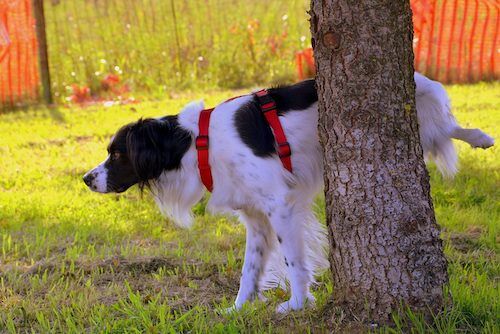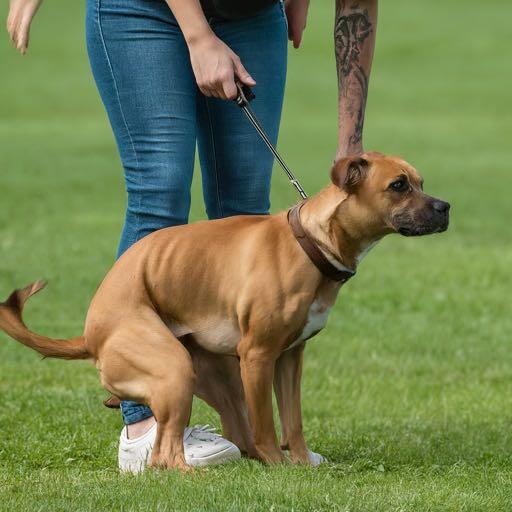Ever wonder how to potty train your dog in a week? Embarking on the journey of potty training your dog can be both rewarding and challenging, but with the right approach, it’s possible to achieve significant progress within a week! In this comprehensive training guide, we’ll explore ten effective strategies to expedite the potty training process and help your dog develop reliable bathroom habits in just seven days.
From establishing a consistent schedule and designating a potty area to using cue words, praise, and rewards, each method is carefully crafted to foster a positive learning environment for your furry friend. By implementing these techniques with patience, consistency, and a dash of perseverance, you’ll pave the way for a successful potty training experience that strengthens the bond between you and your dog while fostering a clean and harmonious home environment.
Search Now: Must Have Potty Training Products For Dogs & Puppies
Potty training is a foundational aspect of your dog’s development, and achieving results within a week requires dedication and strategic planning. Throughout this guide, we’ll delve into essential tips and tricks that prioritize positive reinforcement and clear communication to effectively teach your dog where and when to go potty.
Whether you’re tackling accidents indoors, mastering crate training, or seeking professional guidance, our comprehensive approach aims to address common challenges and accelerate the potty training process. With commitment and the right tools at your disposal, you’ll soon be on your way to successfully potty training your dog in just a week, setting the stage for a lifetime of good bathroom habits and a stronger bond between you and your beloved pet.
How to Potty Train Your Dog in a Week
10. Establish a Regular Schedule
Establishing a regular schedule is fundamental in teaching your dog to reliably go to the bathroom outside. Consistency in the timing of bathroom breaks helps your dog understand and anticipate their opportunities to relieve themselves, thus reducing the likelihood of accidents indoors. This schedule should include taking your dog out first thing in the morning, after each meal, following naps, during playtimes, and right before bedtime.
Each outing not only serves as a chance for your dog to go potty but also reinforces the routine, making it a predictable part of their day. Adhering to a set schedule aids in regulating your dog’s digestive system, making bathroom habits more predictable for both you and your pet. By understanding and meeting their needs with regularity, you foster a sense of security and structure, crucial elements in successful potty training.
9. Choose a Designated Potty Area
Choosing a designated potty area is a crucial step in successful outdoor potty training for your dog. This method helps your dog associate a specific outdoor spot with going to the bathroom, which can significantly speed up the training process. To implement this, select an area that is easily accessible and where you’re comfortable having your dog relieve themselves regularly. Every time you take your dog out for a bathroom break, lead them to this area.
Consistency is key; using the same spot reinforces the behavior through repetition and scent marking. Over time, your dog will learn to associate this area with potty time, making it more likely they’ll head there when they need to go. Remember to reward your dog after they’ve successfully used their designated spot, reinforcing the positive association and encouraging them to repeat the behavior.
8. Introduce a Cue Word
Introducing cue words is a highly effective technique in potty training your dog or puppy within a week. By consistently using a specific word or phrase, such as “go potty” or “bathroom time,” every time you take your dog to their designated potty area, you create a verbal association with the act of eliminating. Start by saying the cue word as soon as you reach the potty area and then patiently wait for your dog to do their business.
The moment they begin to relieve themselves, quietly repeat the cue to reinforce the association. Immediately reward them with praise or a treat once they’re finished. This positive reinforcement not only encourages them to repeat the behavior but also helps them understand the specific action you’re asking for with the cue word. Consistency in using the same cue word and promptly rewarding your dog will significantly increase the likelihood of successfully potty training your dog within a week.
7. Praise and Reward
Praise and rewards are fundamental components in the successful potty training of your dog or puppy, especially if you’re aiming to achieve results within a week. When your dog successfully goes to the bathroom in the designated potty area, immediately offering praise and rewards solidifies the positive behavior in their mind. The key is timing; rewards must be given immediately after they’ve completed the act to ensure they make the correct association between the action and the reward.
Use enthusiastic verbal praise, petting, or their favorite treats as rewards. This positive reinforcement makes the potty training experience enjoyable for your dog and motivates them to repeat the desired behavior. Consistently using praise and rewards not only accelerates the learning process but also strengthens the bond between you and your puppy, creating a foundation of trust and mutual respect.
6. Supervise Indoors
Supervising your dog or puppy indoors is critical for achieving potty training success within a week. Close observation allows you to catch pre-potty signals—such as sniffing, circling, or whining—indicating it’s time to quickly escort them to their designated outdoor potty area. This proactive approach minimizes accidents indoors and provides more opportunities for your dog to get it right and receive praise and rewards.
It’s also an excellent way to deepen your understanding of your dog’s habits and body language, further enhancing your bond. When supervision isn’t possible, consider using a crate or a puppy-proofed area to prevent accidents. Remember, supervision isn’t just about preventing mistakes; it’s about creating opportunities to reinforce the behaviors you want to see, making it a cornerstone of fast-tracking potty training.
5. Limit Food and Water Before Bed
Limiting your dog or puppy’s food and water intake before bed is a strategic move to help achieve potty training success within a week. By reducing access to food and water a couple of hours before bedtime, you can decrease the likelihood of nighttime accidents. This practice helps regulate your dog’s digestive system, making it less urgent for them to relieve themselves during the night when supervision is minimal.
Ensure that this adjustment to their eating and drinking schedule is done gradually and thoughtfully, maintaining their overall hydration and nutritional needs. Combining this approach with a final potty break right before bed further increases the chances of a dry night. It’s a simple yet effective routine adjustment that supports your potty training efforts, helping to establish a consistent pattern and ensuring restful, interruption-free nights for both you and your puppy.
4. Use Crate Training
Crate training is a highly effective method for potty training your dog or puppy within a week, leveraging a dog’s natural instinct to avoid soiling their sleeping area. By providing a comfortable, appropriately sized crate for your dog to rest in, you create a personal space that they are motivated to keep clean. When used correctly, a crate discourages accidents at night or when you’re unable to supervise your dog directly.
The key to successful crate training lies in gradually acclimating your dog to the crate, ensuring it’s associated with positive experiences through treats and praise. Regularly scheduled breaks from the crate to the designated potty area reinforce where it’s appropriate to relieve themselves. This method not only aids in quick potty training but also promotes a sense of security and a personal safe space for your dog, contributing to their overall well-being.
3. Clean Up Accidents Properly
2. Be Patient and Consistent
Being patient and consistent is paramount when aiming to potty train your dog or puppy within a week. While the process may seem challenging at times, maintaining a calm and patient demeanor is essential. Remember that accidents are a natural part of the learning process, and scolding or punishing your pet will only hinder their progress.
Instead, focus on reinforcing positive behaviors with praise and rewards, and remain consistent in your training approach. Consistency in scheduling, cues, and expectations helps your dog understand what is expected of them, leading to quicker and more successful potty training outcomes. By patiently guiding your pet through the process and maintaining unwavering consistency, you set them up for success and lay the foundation for a lifetime of good bathroom habits.
1. Seek Professional Help if Needed
Seeking professional help is a wise decision if you encounter challenges in potty training your dog or puppy within a week. Professional dog trainers and behaviorists possess the expertise and experience to assess your pet’s individual needs and tailor a training plan accordingly. They can provide personalized guidance, identify potential obstacles, and offer effective solutions to accelerate the training process.
Additionally, professional trainers can offer valuable insights into your own training techniques and behaviors, helping you better understand and communicate with your pet. By consulting a professional, you can address any potty training issues promptly, ensuring a smoother and more successful training experience for both you and your furry companion.
Successfully potty training your dog in a week requires dedication, patience, and consistency. By establishing a routine, using positive reinforcement, and closely monitoring your dog’s behavior, you can effectively teach them where and when to relieve themselves. Remember, accidents are part of the learning process, so maintain a positive attitude and celebrate progress. With time and persistence, your dog will learn the desired habits, leading to a happier and cleaner living environment for both you and your furry companion.


